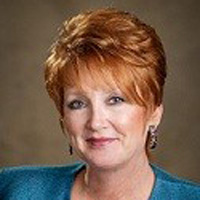Does Your 401(k) Come with a Self-Directed Brokerage Account Option?
How to utilize and capitalize on self-directed brokerage accounts within your 401(k) plan. More options may offer more possibilities.


Since the virtual disappearance of the defined benefit pension, many employers have offered employees 401(k) plans, which are defined contribution plans. Under 401(k)s, employees can contribute a certain portion of their wages on a pretax basis and invest those funds. In many cases, the employer will match these funds.
The plan provider has chosen a menu of investments for the participant to choose from, but the latest development in this plan is the arrival of the self-directed brokerage 401(k) account as an investment option (SDBA). This kind of account can offer exciting new opportunities to plan participants, but it also increases the risk to the investor, so it is crucial to understand the plan to enable the most success.
What are my investment choices now?
Since 1980 when 401(k)s first went into effect, 401(k)s have generally been offered to employees with a limited palette of investment options. Most employers try to offer a variety of investment choices that are diversified, because they have to follow the rules and regulations under the Employee Retirement Income Security Act (ERISA), but many plans come up short. The employee does not have input into these choices, so they can only make selections within the limited menu offered.
From just $107.88 $24.99 for Kiplinger Personal Finance
Become a smarter, better informed investor. Subscribe from just $107.88 $24.99, plus get up to 4 Special Issues

Sign up for Kiplinger’s Free Newsletters
Profit and prosper with the best of expert advice on investing, taxes, retirement, personal finance and more - straight to your e-mail.
Profit and prosper with the best of expert advice - straight to your e-mail.
Is it possible to follow a different path?
Increasingly, however, employers are making self-directed brokerage accounts available in their 401(k) plans in response to employee demand for more investment options. As many as 40% of 401(k) plans now offer this type of account. In fact, the balance in self-directed brokerage 401(k) accounts had continued to rise last year (a 6% increase since Q2 and a 9% increase year over year), despite the havoc in the COVID-19 markets.
A self-directed brokerage 401(k) account is held by the plan administrator, but the plan participant has, in effect, their own brokerage account in which all transactions are made at their direction. The investment choices are usually much more numerous than in the plan menu. Some employers give more freedom than others. For instance, some SDBAs only allow you access to a greater menu of mutual funds, while others allow you to invest in individual stocks, bonds, ETFs and a broader array of mutual funds.
So, essentially, the good news is wider investment options … but the bad news is higher risk.
What are the additional risks of an SDBA?
The main risk is also the main benefit: The employee has more freedom and more investments to choose from, and fewer restrictions to trading. This can lead to emotional investing, not following prudent portfolio management techniques and not monitoring the investments closely. Someone could, for instance, put all of their 401(k) into a single stock or small basket of highly volatile stocks. They can attempt to time the market by making frequent trades and get “whipsawed” trying to do so. There is nothing there to protect them from themselves.
How can you remain protected?
A self-directed brokerage 401(k) account also allows the plan participant to seek a professional adviser. No longer restricted to generic index funds or one or two mutual fund families, a plan participant can hire a professional to lead them to the investments and returns that they are seeking. A professional adviser will already have the expertise to understand the operation of the tax and investment limitation rules applicable to retirement accounts. Studies by Vanguard show that when investors work with a professional adviser, it can add 3% or more to your portfolio value. And, 3% compounded over time can make a huge difference in the value of an account.
The adviser can tailor a plan to the participant’s precise needs and goals and guide them on contribution levels and other matters related to the account. Finally, the adviser can look at the plan assets as part of the participant’s overall financial planning. In the end, that adviser can help make the most of plan assets and contribute to a richer, more secure retirement for the participant.
A self-directed brokerage 401(k) account can offer plan participants exciting new opportunities to invest for retirement. The important thing to remember is to be prepared and understand your plan to avoid mistakes that could harm your long-term financial future. A professional adviser can help you achieve that goal.
Profit and prosper with the best of Kiplinger's advice on investing, taxes, retirement, personal finance and much more. Delivered daily. Enter your email in the box and click Sign Me Up.

Renée Pastor is Founder & Wealth Manager at The Pastor Financial Group, a comprehensive financial planning and wealth management practice headquartered in New Orleans. The firm specializes in retirement planning and 401(k) management for families and individuals nationwide. To learn more, please visit thepastorgroup.com.
-
 I'm want to give my 3 grandkids $5K each for Christmas.
I'm want to give my 3 grandkids $5K each for Christmas.You're comfortably retired and want to give your grandkids a big Christmas check, but their parents are worried they might spend it all. We ask the pros for help.
-
 If You're Not Doing Roth Conversions, You Need to Read This
If You're Not Doing Roth Conversions, You Need to Read ThisRoth conversions and other Roth strategies can be complex, but don't dismiss these tax planning tools outright. They could really work for you and your heirs.
-
 Could Traditional Retirement Expectations Be Killing Us?
Could Traditional Retirement Expectations Be Killing Us?A retirement psychologist makes the case: A fulfilling retirement begins with a blueprint for living, rather than simply the accumulation of a large nest egg.
-
 I'm a Financial Planner: If You're Not Doing Roth Conversions, You Need to Read This
I'm a Financial Planner: If You're Not Doing Roth Conversions, You Need to Read ThisRoth conversions and other Roth strategies can be complex, but don't dismiss these tax planning tools outright. They could really work for you and your heirs.
-
 Could Traditional Retirement Expectations Be Killing Us? A Retirement Psychologist Makes the Case
Could Traditional Retirement Expectations Be Killing Us? A Retirement Psychologist Makes the CaseA retirement psychologist makes the case: A fulfilling retirement begins with a blueprint for living, rather than simply the accumulation of a large nest egg.
-
 I'm a Financial Adviser: This Is How You Can Adapt to Social Security Uncertainty
I'm a Financial Adviser: This Is How You Can Adapt to Social Security UncertaintyRather than letting the unknowns make you anxious, focus on building a flexible income strategy that can adapt to possible future Social Security changes.
-
 I'm a Financial Planner for Millionaires: Here's How to Give Your Kids Cash Gifts Without Triggering IRS Paperwork
I'm a Financial Planner for Millionaires: Here's How to Give Your Kids Cash Gifts Without Triggering IRS PaperworkMost people can gift large sums without paying tax or filing a return, especially by structuring gifts across two tax years or splitting gifts with a spouse.
-
 'Boomer Candy' Investments Might Seem Sweet, But They Can Have a Sour Aftertaste
'Boomer Candy' Investments Might Seem Sweet, But They Can Have a Sour AftertasteProducts such as index annuities, structured notes and buffered ETFs might seem appealing, but sometimes they can rob you of flexibility and trap your capital.
-
 Quick Question: Are You Planning for a 20-Year Retirement or a 30-Year Retirement?
Quick Question: Are You Planning for a 20-Year Retirement or a 30-Year Retirement?You probably should be planning for a much longer retirement than you are. To avoid running out of retirement savings, you really need to make a plan.
-
 Don't Get Caught by the Medicare Tax Torpedo: A Retirement Expert's Tips to Steer Clear
Don't Get Caught by the Medicare Tax Torpedo: A Retirement Expert's Tips to Steer ClearBetter beware, because if you go even $1 over an important income threshold, your Medicare premiums could rise exponentially due to IRMAA surcharges.
-
 I'm an Insurance Pro: Going Without Life Insurance Is Like Driving Without a Seat Belt Because You Don't Plan to Crash
I'm an Insurance Pro: Going Without Life Insurance Is Like Driving Without a Seat Belt Because You Don't Plan to CrashLife insurance is that boring-but-crucial thing you really need to get now so that your family doesn't have to launch a GoFundMe when you're gone.